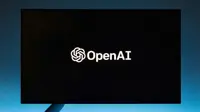Govt won't allow the cash bulge again, says Jaitley
17 Dec 2016
 All that demonetised money sent back to the Reserve Bank of India over the past month and a half will not flow back into the system as a substantial part of the paper money will get converted into digital money, finance minister Arun Jaitley said today.
All that demonetised money sent back to the Reserve Bank of India over the past month and a half will not flow back into the system as a substantial part of the paper money will get converted into digital money, finance minister Arun Jaitley said today.
Addressing the annual general body meeting of industry chamber the FICCI in New Delhi today, Jailey said that not all of the Rs15,44,000 crore of floating liquidty sucked off from the financial system through the government's demonetisation exercise will be released back.
Jaitley also defended the move to recall all old 500 and 1,000 rupee notes as "a somewhat courageous step" even as critics of Narendra Modi's demonetisation gambit continue to cry foul as the 30 December deadline set by the government nears.
He also reaffirmed his oft repeated view that demonetisation would create a "new normal" for the Indian economy.
"One of the efforts of this exercise has to be that even though a reduced cash currency could remain, our conscious effort [is] to supplement the rest with a digital currency," Jaitley pointed out.
Some 17,165 million units of Rs500 denomination and 6,858 million units of Rs1,000 banknotes were in circulation as of 8 November when the government decided to scrap them.
There is a concerted effort by government and its agencies to try to wean the Indian economy off cash as the means of payment and to try to get more of the economy working in that digital manner. But getting the entire population out of cash will not be an easy task and is not being attempted at, as Jaitley himself has said earlier.
However, a deliberate limiting of the amount of cash in order to drive digital transactions could have the side effects of deflationary pressures brought about by a dearth of cash, say experts.
A finance ministry release, meanwhile, stated that the Reserve Bank of India (RBI) has taken several measures to absorb the excess liquidity in the banks post demonetisation. It has introduced incremental CRR of 100 per cent on deposits collected between 16 September and 11 November 2016 effective from the fortnight beginning 26 November. Subsequently, RBI has reviewed the situation and withdrawn the incremental CRR effective from 10 December 2016.
Also, it increased the market stabilisation scheme limit to Rs6,00,000 crore from earlier limit of Rs30,000 crore with a view to mop up additional liquidity from the system effective from 2 December, 2016. For regular liquidity management repo and reverse repo both fixed and variable ones are used by RBI.
While adequate liquidity is essential for meeting the needs of the productive sectors, there is not a direct link between excess liquidity and lending rates, it added.































